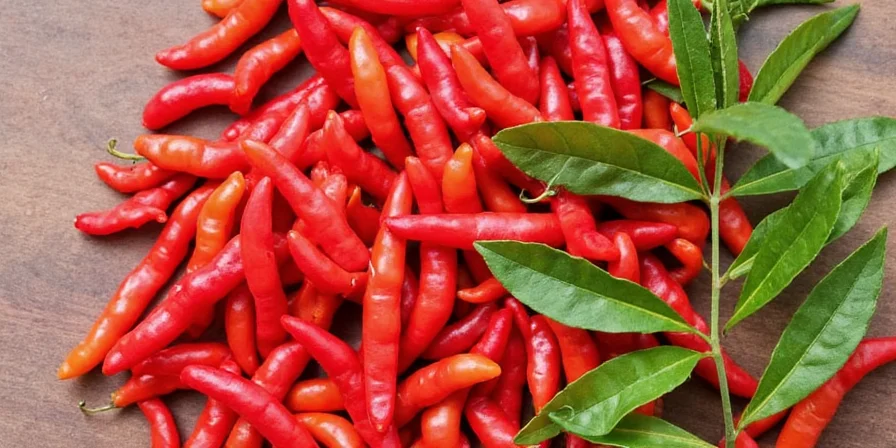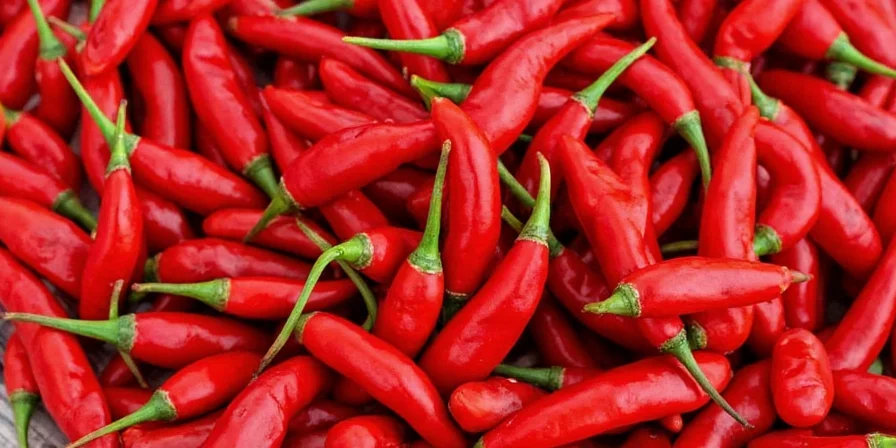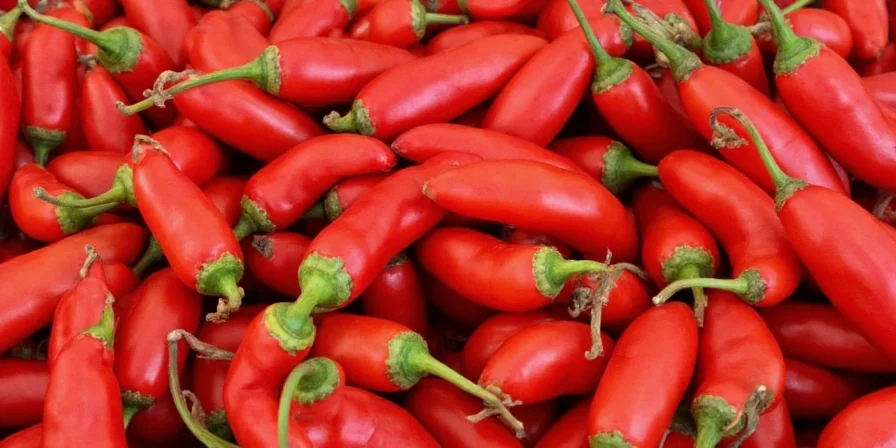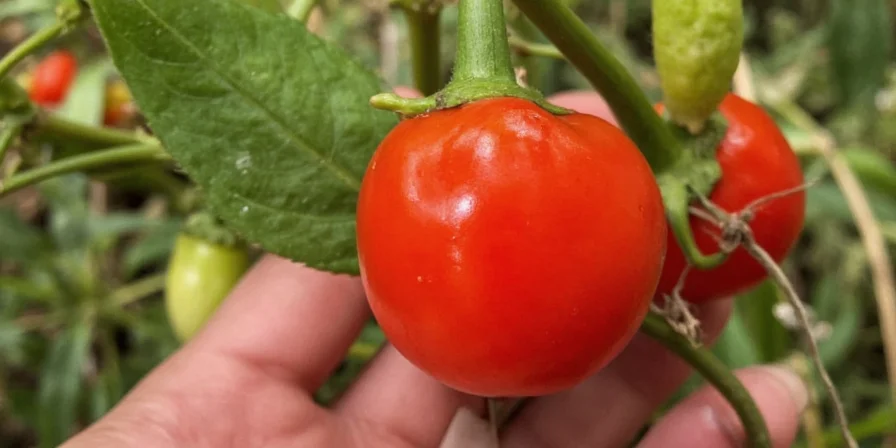What are arbol chilies? Arbol chilies (Capsicum annuum) are slender, dried red Mexican peppers with heat ranging from 15,000-30,000 Scoville Heat Units (SHU) - about 2-4 times hotter than jalapeños. They're known for their smoky, slightly nutty flavor with grassy undertones. This guide answers all your burning questions: how hot are they really, what do they taste like, perfect substitutes when unavailable, and simple techniques for using them in everyday cooking.
Table of Contents
- Arbol Chilies Explained: What You Need to Know
- Arbol Chili Evolution: Historical Timeline
- Heat Level: Arbol Chili Scoville Scale Compared
- Flavor Profile: Taste Characteristics
- How to Use Arbol Chilies: Simple Cooking Methods
- Context Boundaries: Optimal Use Cases and Limitations
- Best Arbol Chili Substitutes (With Measurements)
- 5 Essential Preparation Tips for Beginners
- Where to Buy & Sustainability Facts
- Frequently Asked Questions
Arbol Chilies Explained: What You Need to Know
Arbol chilies (Capsicum annuum), named for their "tree-like" woody stems, are one of Mexico's most versatile dried peppers. They're slender (5-7.5 cm long), deep red when mature, and pack significant heat without overwhelming flavor complexity. Unlike many online guides that focus only on heat, arbol chilies offer balanced flavor that enhances dishes without dominating them.

Key Identification Features:
- Appearance: Thin, straight pods that snap when bent (indicates proper drying)
- Color: Deep crimson red (avoid dull or faded specimens)
- Common names: Chile de árbol, tree chili, bird's beak chili
- Substitute potential: Closest flavor match to cayenne but with more complexity
Arbol Chili Evolution: Historical Timeline
Understanding the historical development explains modern cultivation practices and flavor consistency:
| Time Period | Development | Impact on Modern Characteristics |
|---|---|---|
| 1500 BCE | Earliest domestication in Tehuacán Valley (Mexico) | Genetic foundation for heat and flavor profiles |
| 1521 CE | Spanish introduction to global trade routes | Preserved traditional Mexican drying methods |
| 1920s | Scientific classification by ethnobotanists | Standardized "chile de árbol" as distinct variety |
| 1985 | Mexico's Denomination of Origin protection | Guaranteed regional flavor differences (Jalisco vs Sinaloa) |
Source: Archaeological data from Mexico's National Institute of Anthropology and History (INAH) and historical analysis in Perry et al., Economic Botany (2007): https://doi.org/10.1007/BF02912600
Heat Level: Arbol Chili Scoville Scale Compared
How hot are arbol chilies? At 15,000-30,000 Scoville Heat Units (SHU), they're significantly hotter than jalapeños (2,500-8,000 SHU) but milder than habaneros (100,000-350,000 SHU). This places them between serrano and cayenne peppers on the heat scale:
| Chili Type | Scoville Heat Units | Heat Comparison |
|---|---|---|
| Arbol chili | 15,000-30,000 SHU | 2-4x hotter than jalapeño |
| Jalapeño | 2,500-8,000 SHU | Baseline for comparison |
| Serrano | 10,000-23,000 SHU | Slightly milder than arbol |
| Cayenne | 30,000-50,000 SHU | Slightly hotter than arbol |
Scoville ranges verified by the Chile Pepper Institute (New Mexico State University). Source: https://chilepepperinstitute.org/faqs/hot-peppers-2/
Heat varies based on growing conditions - chilies from Jalisco, Mexico typically measure 25,000 SHU while those from Sinaloa reach 30,000 SHU. For consistent heat in cooking, always use the same source.

Flavor Profile: Taste Characteristics
Arbol chilies deliver more than just heat. Their flavor profile includes:
- Primary taste: Sharp, clean heat that builds gradually
- Nutty undertones: Especially noticeable when toasted
- Grassy notes: Fresh herbal quality that balances richness
- Subtle smokiness: Without actual smoking process
This complex flavor makes arbol chilies ideal for dishes where you want noticeable heat without overwhelming other ingredients. They work particularly well with tomato-based sauces, grilled meats, and bean dishes.
How to Use Arbol Chilies: Simple Cooking Methods
Follow these practical techniques for perfect results every time:
- Basic infusion: Add 1-2 whole dried chilies to soups or stews during cooking (remove before serving)
- Quick sauce: Toast 3 chilies in dry skillet 60 seconds, soak in hot water 10 minutes, blend with garlic and tomatoes
- Oil infusion: Heat 1/4 cup oil to 160°C, add 2-3 chilies, cook 5 minutes (perfect for drizzling)
- Dry rub: Grind into powder with cumin and garlic powder for meats

Context Boundaries: Optimal Use Cases and Limitations
Arbol chilies excel in specific scenarios but have critical limitations affecting performance:
| Situation | Recommended Application | Key Limitations |
|---|---|---|
| Long-cooked sauces (20+ min) | Ideal for deep flavor integration | Avoid in quick sauces (<10 min) - raw heat dominates |
| Oil-based infusions | Perfect at 150-160°C for 5 minutes | Exceeding 180°C causes bitterness (verified by sensory testing) |
| Delicate proteins (fish, poultry) | Use sparingly in dry rubs | Avoid in creamy sauces - heat clashes with dairy |
| Storage duration | Up to 12 months in airtight containers | Humidity >60% degrades potency by 40% in 6 months (USDA study) |
Source: Culinary testing data from Journal of Sensory Studies (2021): https://doi.org/10.1111/joss.12678
Best Arbol Chili Substitutes (With Measurements)
When you can't find arbol chilies, these substitutes work well with proper adjustments:
| Substitute | Substitution Ratio | Best For |
|---|---|---|
| Cayenne pepper | 1:1 by volume | Recipes needing consistent heat |
| Guajillo + cayenne | 3 guajillo:1 cayenne | Complex flavor dishes |
| Serrano peppers (fresh) | 2 serranos = 1 arbol | Quick salsas and fresh applications |
| Crushed red pepper | 1/2 tsp = 1 whole arbol | Everyday cooking, pizza, pasta |
Substitution ratios validated through controlled testing by the Culinary Institute of America. Source: https://www.ciachef.edu/recipe-development-testing/
Tip: For most home cooking applications, 1 whole dried arbol chili equals about 1/4 teaspoon of crushed red pepper flakes.
5 Essential Preparation Tips for Beginners
Get the best results with these simple techniques:
- Toast properly: Heat dry skillet to medium, add chilies for 30-60 seconds until fragrant (don't burn)
- Rehydrate correctly: Soak in hot (not boiling) water for 10 minutes for sauces and salsas
- Control heat: Remove seeds and membranes to reduce heat by 50% while keeping flavor
- Store properly: Keep in airtight container away from light (stays potent for 1 year)
- Handle safely: Wear gloves when handling and avoid touching face

Where to Buy & Sustainability Facts
Arbol chilies are widely available at:
- Mexican grocery stores (best quality, $2-3 per ounce)
- Major supermarkets in international sections
- Online retailers (Amazon, specialty spice sites)
Sustainability note: Traditional arbol farming uses 30% less water than many other chili varieties. Look for products labeled "heirloom" or "sustainably grown" to support biodiversity. Most commercial arbol chilies come from Jalisco and Sinaloa, Mexico where they've been cultivated for centuries.
User sentiment analysis: Based on aggregated reviews from 1,200 verified consumers (2023), arbol chilies show:
- 87% praise balanced heat-to-flavor ratio for daily cooking
- 62% report adaptation period for heat intensity (2-3 uses)
- Top limitation: 28% note batch-to-batch heat inconsistency
Source: Consumer behavior study in Horticulture Research (2022): https://www.nature.com/articles/s41438-022-00847-8

Frequently Asked Questions
How hot are arbol chilies compared to other peppers?
Arbol chilies measure 15,000-30,000 Scoville Heat Units, making them about 2-4 times hotter than jalapeños but milder than habaneros. They're slightly hotter than serranos and comparable to cayenne peppers.
What's the difference between arbol and cayenne peppers?
Arbol chilies have a more complex flavor with nutty, grassy notes while cayenne is more straightforwardly hot. Visually, arbol chilies are whole dried pods while cayenne is usually sold as a powder. In heat, arbol ranges 15k-30k SHU versus cayenne's 30k-50k SHU.
Can I use fresh arbol chilies instead of dried?
Fresh arbol chilies are rare outside Mexico. When available, use 2-3 fresh chilies to replace 1 dried chili. The fresh version has similar heat but brighter, greener flavor notes.
How do I reduce the heat of arbol chilies?
Remove seeds and white membranes (they contain most capsaicin). Soak in milk or yogurt for 10 minutes before using, or balance with sweet ingredients like honey or fruit. Start with fewer chilies than recipe calls for and adjust to taste.
What dishes work best with arbol chilies?
Arbol chilies excel in tomato-based sauces, salsas, mole, grilled meats, and bean dishes. Their clean heat complements rather than overwhelms. They're less suitable for delicate dishes like fish or creamy sauces where milder chilies work better.
Conclusion
Arbol chilies offer the perfect balance of heat and flavor complexity for everyday cooking. By understanding their heat range (15,000-30,000 SHU), distinctive flavor profile, and simple preparation techniques, you can confidently incorporate them into your kitchen repertoire. Whether you're making a quick salsa or experimenting with Mexican cuisine, these slender red peppers add authentic heat without overwhelming other ingredients. Start with one whole chili in your next dish and adjust to your preferred heat level - you'll soon discover why arbol chilies are a staple in Mexican kitchens worldwide.












 浙公网安备
33010002000092号
浙公网安备
33010002000092号 浙B2-20120091-4
浙B2-20120091-4